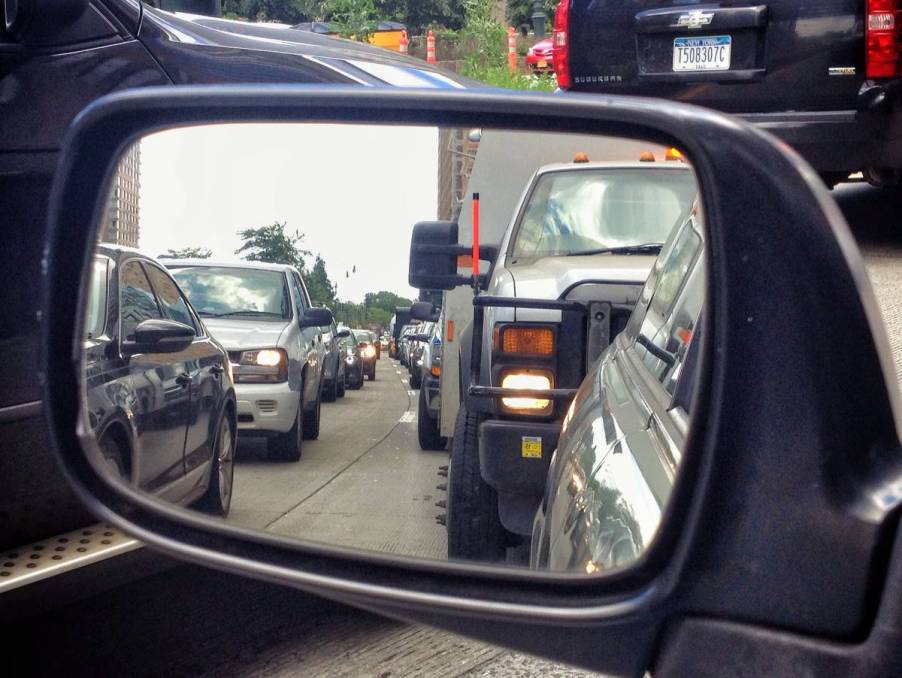
The ‘Correct’ Way to Adjust Your Car Mirrors Might Surprise You
Do you rely solely on your mirrors when driving to determine when it’s safe to switch lanes? If so, are you sure you’ve adjusted them correctly? You may have created massive blind spots for yourself that you aren’t even aware of. There’s actually a shockingly easy way to address this, however, by using a few simple car safety tips.
How do I get rid of blind zones?
Unfortunately, you can’t. The NHTSA reports that there will be mini-blind zones no matter how you adjust your mirrors. The important thing to remember is that you don’t want one large enough to hide an entire vehicle.
To do this on the driver’s side mirror, place your head against the side window, and then adjust the mirror so that you can just barely see the side of the car. For the passenger side mirror, turn your head so that you’re looking at the middle of the car, and adjust it. The NHTSA provides graphics on how to do this correctly.
Next, you want to make sure that your blind spots are truly eliminated. To do this, you’ll need another moving car. Watch someone pass your vehicle. It will appear in the outside mirror first, and then leave the inside mirror. It will then appear in your peripheral vision, and leave the outside mirror. Sitting in a parking lot as others pass you by is one way to do this without actually testing it on the highway. You can also have a friend or family member drive past.
To really put this to the test, first look in the inside mirror, and then glance at the outside mirror. If you can’t see other vehicles pass, then you know you still have blind spots.
Why are some people surprised at how to adjust your mirrors?
A discussion on Reddit was very revealing. In spite of the advice from the NHTSA, many people simply prefer to be able to see their vehicle in the side view mirrors. It’s a reference point for them that they’ve grown accustomed to over the years.
One Reddit user wrote, “I prefer seeing a tiny sliver of my vehicle in my mirrors, and you will not take that away from me.”
Another added, “Absolutely agree; I need the context of where my vehicle falls in that space. I also have blind spot sensors and know how to check my blind spot.”
Others who do check their blind spot and try to adjust their mirrors as advised by the NHTSA report that the C-pillars are another source of major blind spots. To avoid this, they continue to use the tried and true method of turning completely around.
With modern technology that uses cameras to check for blind spots, many people don’t bother to use their mirrors anymore. They’ve grown accustomed to looking at the camera and listening for audible alerts. This can be dangerous because if the equipment malfunctions, they’ve developed some bad habits that may lead to a wreck.
Why are blind spots so dangerous?
The short answer is that they cause wrecks. For anyone who has ever found a car suddenly appearing out of nowhere, you know what a blind spot is. It can be very scary the first few times it happens, especially when you’ve checked your mirrors.
There’s a reason why driving instructors have you practice putting your arm on the passenger seat and turning your head to look over your shoulder. It’s so that you can find those pesky blind spots. Adjusting your mirrors properly eliminates the need to do this, however.
Regardless, it’s possible to avoid wrecks by adjusting your mirrors properly. This is especially true on multilane roads. It’s better to be safe than sorry, so don’t hesitate to try the NHTSA’s method for adjusting your mirrors.


